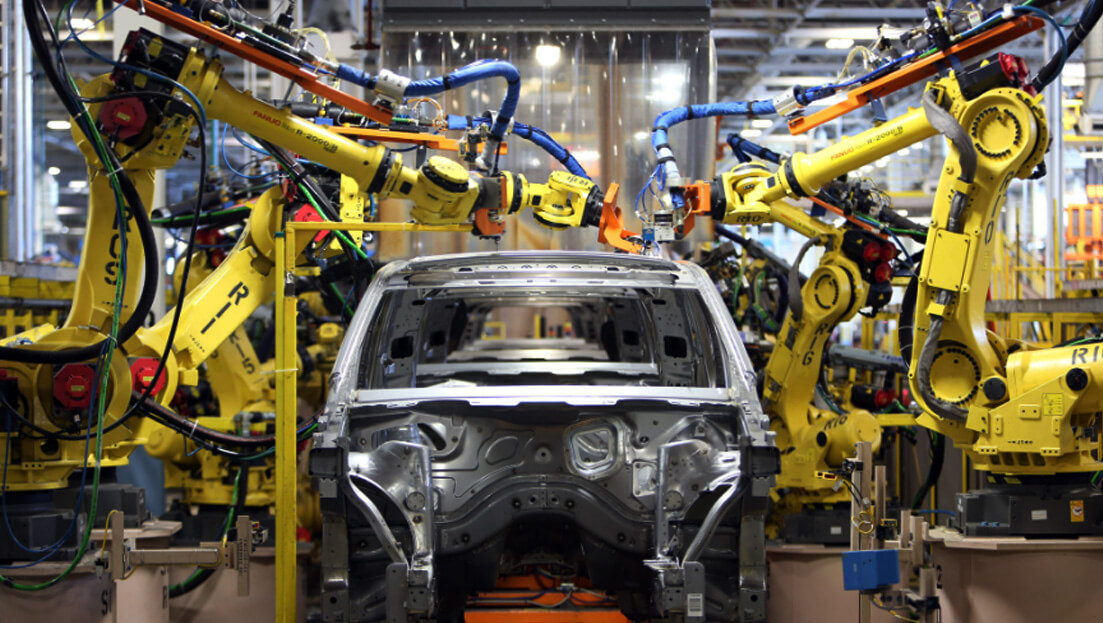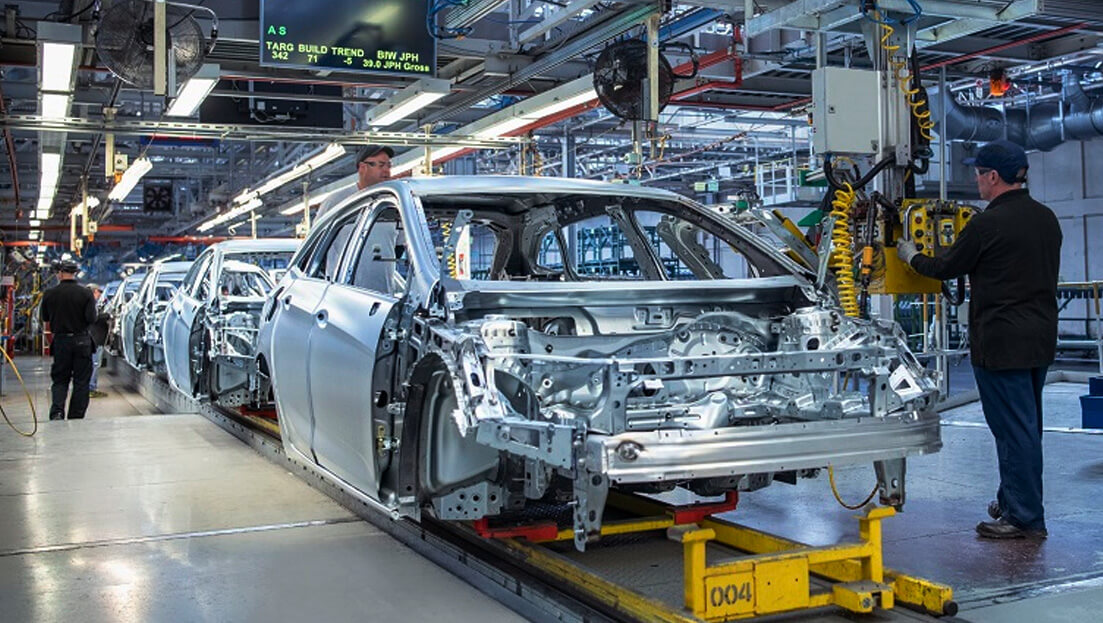What Are Cars Made Out Of? It’s not what you think. What about airplanes, trains, or motorcycles? You’ve probably heard of carbon fiber by now, but do you really know what are cars made out of?
In this article, we’ll talk about the different types of materials used to make today’s cars, along with the advantages and disadvantages of each material.
We’ll also briefly discuss some different techniques used to create these materials and show you how they impact the vehicles they’re used in.
By the end of this article, you should be able to identify just about any component on your car or truck simply by its material composition!
What Are Cars Made Out Of? Materials Used to Make Cars

Your car might be made from steel, aluminum, or plastic. But these materials can take on many different forms. Some examples of common car parts include pistons and crankshafts (metal), gas tanks (plastic), and seats and dashboards (leather).
An important rule to remember is that all cars must pass government safety tests before they’re sold.
These tests make sure a car’s parts can withstand crashes without breaking. New types of materials are also being developed to make cars lighter and safer.
Read also: How Many Cars Are There in the World?
Body Construction
The body of your car is typically constructed from steel, which is an inexpensive material that can withstand significant wear and tear.
Aluminum also comes into play, being used for structural components like door frames and roof pillars. A car’s exterior body panels are constructed from materials like fiberglass, polyurethane, or carbon fiber.
On top of that, there are layers of paint sprayed on top to protect your car’s body against scratches and rust.
Over time these parts may need to be replaced as they break down; however, it’s nice to know that you’re driving around in a strong metal skeleton if you do get into an accident.
Engine Materials
Engine blocks and cylinder heads are composed of cast iron, aluminum alloy, or steel. Aluminum is preferred for its lightweight and superior heat conductivity, but it’s expensive.
Cast iron is durable but less resistant to heat than aluminum. Steel engine blocks and cylinder heads have long been used by car manufacturers because they can withstand higher temperatures without distortion.
Fuel Delivery System
The gas tank is one of several parts that comprise a vehicle’s fuel delivery system. As you drive, gasoline travels from your gas tank to your engine’s intake manifold and then on to your engine’s cylinders.
Fuel injectors squirt pressurized fuel into each cylinder, where it mixes with air from your car’s air filter (which is also part of its overall fuel delivery system).
When you step on your car’s accelerator, pistons move down and compress both fuel and air in each cylinder.
Combustion occurs when spark plugs fire electricity at a tiny amount of gasoline in a cylinder, as it burns, more gasoline and oxygen are forced into that same space, which increases pressure.
Brakes, and Suspension
Mechanical brakes and suspension systems in cars are typically made out of steel or aluminum. Steel tends to be cheaper and can handle heavier loads than aluminum, but it is also heavier and not as sturdy.
Aluminum, on the other hand, is more likely to rust but is much lighter, which improves fuel efficiency.
Thus, a vehicle that uses more steel may not have better braking power than one that uses more aluminum, rather it has better handling due to its lower weight.
Brakes themselves are generally metal because metal conducts heat better and doesn’t get sticky like rubber does when wet.
However, most modern cars use metal/rubber composite brakes for weight reduction.
Interior Upgrades
While many car manufacturers are continuously improving their products to include more luxury and higher-tech, they’re also paying a lot of attention to what goes on inside.
From technology that allows you to customize your audio experience in real-time, to adding features that make it easier for parents to keep an eye on their kids in rear-facing car seats.
Many car companies are working hard to improve things from behind the wheel or buckled up next to it. So what are cars made out of now? A few decades ago you may have said steel, today you might say aluminum.
Top 5 Common Types of Metal Used in Cars Manufacturing
What cars are made out of? The short answer is, that they’re mostly made out of metal. It’s the medium and long answer that is more complicated and interesting.
There are many different kinds of metal used in car manufacturing, each with different properties and applications.
But they can be broken down into broad categories such as common metals, high-performance metals, and specialty metals that can make your car lighter or stronger, among other uses.
Let’s take a look at the five most common types of metal used in car manufacturing today!
Read also: Auto Body Paint Colors: The Top Picks for Your Car
Type 1: Aluminum
We all know aluminum is one of the most common metals in our world, and it can be found everywhere from soda cans to foil.
Automakers have been using aluminum for decades, but it has only recently gained a great deal of popularity due to its strength-to-weight ratio (it’s also quite easy to work with). When compared to steel, aluminum weighs significantly less while providing greater structural support.
In other words, if you’re looking for a vehicle that is both lighter and safer than your average vehicle, consider looking into an aluminum model.
To learn more about how aluminum contributes to safety standards, keep reading.
Type 2: Steel
Last year, 54% of new vehicles were made from steel. Steel is an ideal material for vehicle bodies because it’s both lightweight and strong; you can make a vehicle lighter without sacrificing strength and rigidity.
Steel is also cheap when compared to other materials. That’s not to say it’s cheap to produce: It takes massive amounts of energy to heat steel slabs into a malleable state so they can be bent into shape.
But that amount of energy is relatively small when compared with what’s required to do something similar with aluminum or carbon fiber.
For that reason, as long as fossil fuels remain inexpensive, expect steel to continue dominating automobile manufacturing. On that note…
Type 3: Magnesium
Magnesium makes up about 2% of your vehicle’s body. This light metal is also abundant (making it cheap to acquire) and highly resistant to corrosion.
However, magnesium does have a few downsides: it melts at more than 650°C, so unless you want your ride covered in puddles, you’ll need special paint designed for magnesium.
Plus, its brittleness can cause issues if you ding it while washing it, magnesium dents don’t bounce back as aluminum ones might.
Type 4: Titanium
Titanium is lightweight, as it’s denser than steel and aluminum. It has also become extremely affordable in recent years.
Thanks to a surge in demand for titanium dioxide – an ingredient used to whiten paper, paint, and plastics – for use in everything from food packaging to sunscreen.
Titanium is incredibly strong as well, which makes it ideal for body panels that undergo extreme wear and tear, such as bumpers and hoods.
On some models, 100 percent of body panels will be composed of lightweight titanium (rather than alloy) to help cut weight even further.
Type 5: Fiberglass & Carbon Fiber
Carbon fiber and fiberglass have been successfully making their way into vehicle components for several years.
Carbon fiber is an extremely strong and light material (about 10 times stronger than steel) that can be molded into any shape, making it popular for use in body panels and other parts of a vehicle outer shell.
Companies like BMW even use carbon fiber to make entire frames. Fiberglass is another lightweight material that can also be formed with varying densities.
Both materials are most often used in body panels, roofing components, headliners, and more because they’re cost-effective but still durable enough to last through multiple uses before they need replacing or repairing.
Conclusion
Like you and me, cars are composed of a variety of different elements. However, your average car is made out of about 21% steel and 78% aluminum (Ford).
On top of that, there are also numerous other bits of materials that go into making up a car. What are cars made out of now?
In short, as it turns out, more than you probably realized! Next time you think about buying a new vehicle or replacing parts in your old one, think again. Knowing what makes up your car can help increase its longevity and save you some cash.






